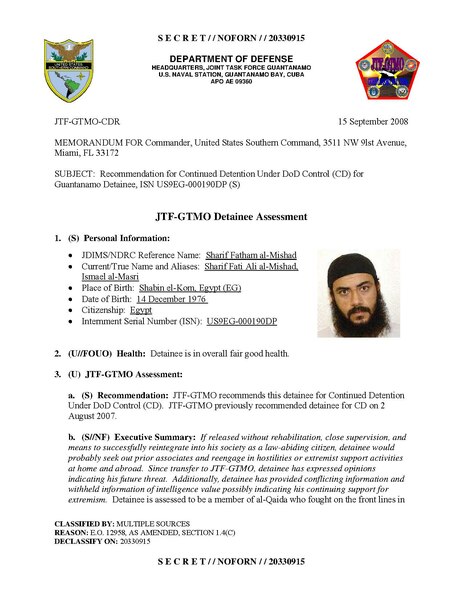Heh…they wont even return phone calls….and this is just in Detroit, other locations possible or a larger network?

Dem Donors Plead Guilty to $33 Million Medicare Fraud Scheme
FreeBeacon:Five individuals who have donated to Democratic politicians pleaded guilty to a scheme that drained Medicare out of $33 million dollars.Two physicians and three owners of hospice and home care companies based out of Detroit, Mich., were charged on June 18, 2015 as part of the largest Medicare fraud case in history for submitting fraudulent claims for home health care and hospice services that were either not provided or deemed medically unnecessary.The elaborate operation revolved around Muhammad Tariq, Shahid Tahir, and Manawar Javed—the owners of the home health care and hospice companies—paying kickbacks and bribes to physicians for referrals to their companies that included A Plus Hospice and Palliative Care, At Home Hospice, and At Home Network Inc.
Wasseem Alam, a physician who was the top referrer to the companies, admitted he was responsible for millions in Medicare reimbursements and said he received kickbacks, along with other inducements, in exchange for those referrals.
“Alam bribed his patients into accepting services from At Home Network by providing them with medically unnecessary controlled substance prescriptions both personally and through unlicensed individuals, he admitted,” the Justice Department said. “Co-owner Tariq admitted that he knew about Alam’s controlled substances bribes to patients. Alam also instructed others to falsify patient files to hide the fact that the prescriptions were medically unnecessary, according to his plea agreement.”
Hatem Ataya, a physician who was the second highest referrer to the At Home Network and the top referrer to At Home Hospice, also admitted to accepting kickbacks for his referrals.
“Ataya also admitted that the Tahir-associated companies would submit false billing based on his referrals for purported home health and hospice services, when, at times, these services were neither medically necessary nor provided,” the Justice Department said.
Ataya was separately charged last year in connection with the death of three patients and hit with three counts of delivering a controlled substance and another three counts of delivering a controlled substance causing death, according to WNEM TV in Flint, Michigan.
Tariq, Tahir, and Javed pleaded guilty to one count to commit health care fraud and wire fraud.
Alam and Ateya both pleaded guilty to one count of conspiracy to commit health care and wire fraud, while Alam additionally pleaded guilty to one count of structuring.
All five individuals have combined to give tens of thousands of dollars to Democratic politicians.
Shahid Tahir, one of the owners of the companies, has made 63 contributions totaling at least $33,000 to Democratic politicians such as Hillary Clinton and Reps. Keith Ellison (D., Minn.) and Gary Peters (D., Mich.), among many others.
Muhammed Tariq, another owner, added five donations to Democratic politicians including the likes of John Edwards and Reps. Debbie Stabenow (D., Mich.) and Bobby McKenzie (D., Mich.). Tariq contributed $2,000 to Democrats throughout the years.
Manawar Javed, the third owner, made two contributions to Democrats that totaled $750.
The first physician involved in the scheme, Waseem Alam, made $3,250 worth of donations that included a $1,000 contribution to both Hillary Clinton and Rep. Stabenow.
Hatem Ateya, the second physician, made four separate donations to Democrats that came to $2,500.
Together, they have donated more than $40,000 to Democratic politicians nationwide, compared to just $2,000 to Republicans within Michigan.
The group was initially caught last year during a nationwide sweep led by the Medicare Fraud Strike Force.
The sweep resulted in charges against 243 individuals including 46 doctors, nurses, and other medical professionals for $712 million in false billings—the largest Medicare fraud bust in history.
Requests for comment were not returned.
*****
Miami, Los Angeles:
The FBI arrested 46 doctors and nurses across the country this week in the largest Medicare fraud bust ever.
CNN: In total, 243 people were arrested in 17 cities for allegedly billing Medicare for $712 million worth of patient care that was never given or unnecessary. In one of the most egregious cases, owners of a mental health facility in Miami billed tens of millions of dollars for psychotherapy sessions based on treatment that was little more than moving patients to different locations, said Attorney General Loretta Lynch. A Los Angeles doctor is charged for allegedly billing $23 million for 1,000 power wheelchairs and home health services that were not medically necessary and often not provided. And in a Florida case, a health care provider received $1.6 million from Medicare for prescription drugs that were never purchased and never dispensed, said Lynch.
There is a Strike Force on Medicare fraud:
Medicare Fraud Strike Force Teams harness data analytics and the combined resources of Federal, State, and local law enforcement entities to prevent and combat health care fraud, waste, and abuse. First established in March 2007, Strike Force teams currently operate in nine areas: Miami, Florida; Los Angeles, California; Detroit, Michigan; southern Texas; Brooklyn, New York; southern Louisiana; Tampa, Florida; Chicago, Illinois; and Dallas, Texas.
Strike Force teams bring together the efforts of the Office of Inspector General, the Department of Justice, Offices of the United States Attorneys, the Federal Bureau of Investigation, local law enforcement, and others.
These teams have a proven record of success
in analyzing data and investigative intelligence to quickly identify fraud and bring prosecutions. The interagency collaboration also enhances the effectiveness of the Strike Force model. For example, OIG refers credible allegations of fraud to the Centers for Medicare & Medicaid Services (CMS) so that it can suspend payments to the suspected perpetrators, thereby immediately preventing losses from claims submitted by Strike Force targets.



